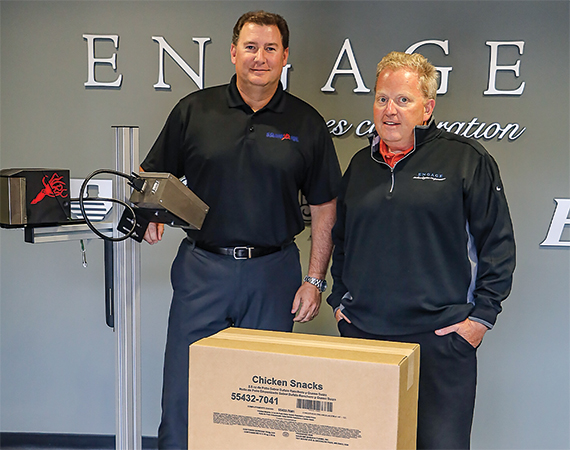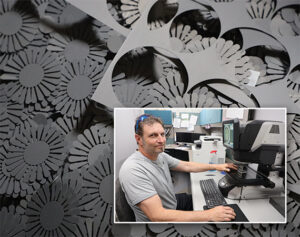The distance between the first and third words in this sentence is about as wide as the gap between a new line of “long throw” commercial printers made by Brooklyn Park-based Squid Ink and the products upon which they print.
It’s small — about half an inch in total — but it’s approximately twice as large as earlier lines, which needed to be at most a quarter-inch away as they spit ink onto cardboard boxes, propane tanks, bags of concrete, or other products zooming past the stationary printer on a conveyor belt. The company designs and builds printers that ultimately go to work for companies like Kraft Foods or 3M.
“If you go to a Lowe’s or Home Depot, every item in that building has some kind of inkjet code on it,” says Chad Carney, the vice president of marketing for Engage Technologies, which owns Squid Ink. “We make the printers that print those codes.”
A longer distance between print-er and print-ee may not seem like much, but it means the company can sell its printers to a broader range of customers in different markets, according to Carney.
The longer distance is due to a newer and more powerful “print engine” manufactured by Konica Minolta. The print engine is the brains behind the operation, Carney says, and Squid Ink is using this newer engine to build printers that eject ink farther than older predecessors and in smaller droplets.
“It’s like Boeing using a Pratt & Whitney engine,” Carney says. “We’re using the engine, and we’re designing the printer around it.”
The more robust print engine can help minimize or eliminate the “bowtie effect” on curved surfaces, in which a printed barcode or logo is legible in the middle but spread out or faded — or outright illegible — on either side, Carney explains. Using a printer with a longer throw and more powerful jets of ink can prevent a hard-to-read or fuzzy code.
The stronger engine can also cover up problems with, say, the conveyor belt that sends packages past the printer because products are less likely to smack into the printer, possibly damaging it. Repairs could cost $5,000 to $10,000. It also leaves more room for materials that aren’t handled as tightly — a line of boxes that aren’t aligned perfectly or that are bowed outward slightly.
Walmart, for instance, will give suppliers a figurative slap on the wrist if barcodes won’t scan properly, then a fine, then stop doing business with that supplier entirely, Carney says.
“If you have illegible codes, then why are you printing the code to begin with?” he asks rhetorically. “Companies like [Walmart], they don’t mess around.”
Return to the Fall 2024 issue of Enterprise Minnesota® magazine.


